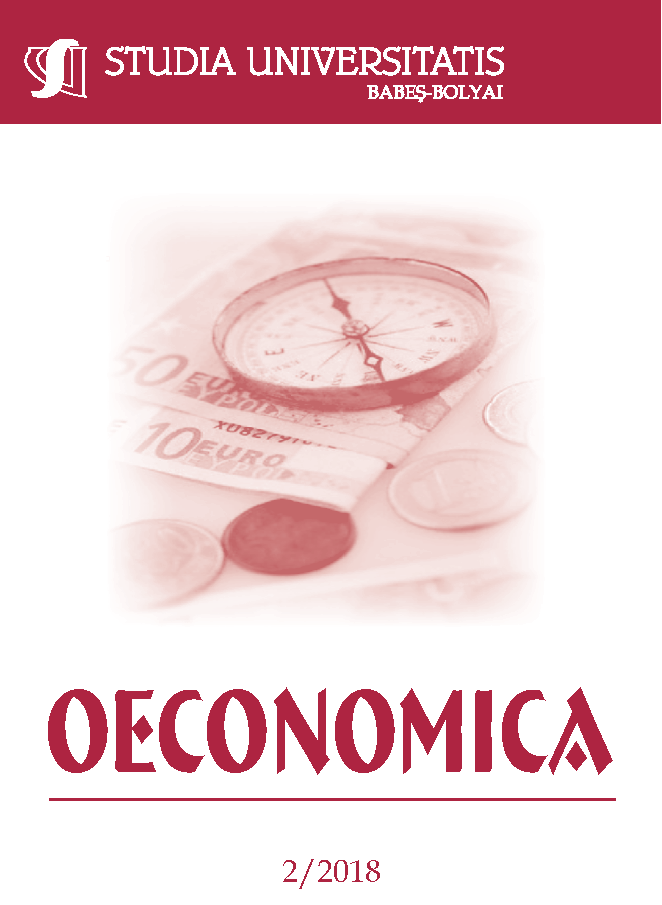INVOLUNTARY UNEMPLOYMENT IN A NEOCLASSICAL GROWTH MODEL WITH PUBLIC DEBT AND HUMAN CAPITAL
DOI:
https://doi.org/10.2478/subboec-2018-0006Keywords:
Underemployment equilibrium, involuntary unemployment, aggregate investment function, overlapping generations’ model, human capitalAbstract
Even more than eight decades since the publication of Keynes’ “General Theory of Employment, Interest, and Money” modern macroeconomists disagree on the notion of “underemployment equilibrium” with so-called “involuntary unemployment”. While the majority of macro theorists trace involuntary unemployment back to frictions and rigidities in the adaptation of wages and output prices to market imbalances, a minority position holds that even under perfectly flexible output prices and wage rates involuntary unemployment might occur. Morishima in “Walras’ Economics” and more recently Magnani presume that contrary to the majority view aggregate investment is not perfectly flexible but governed by “animal spirits” of investors. The aim of the present paper is to integrate the Morishima-Magnani approach into a Diamond-type overlapping generations’ (OLG) model with internal public debt subsequently extended by human capital accumulation. It turns out that in spite of perfectly flexible real wage and interest rate involuntary unemployment occurs in intertemporal general equilibrium when aggregate investor sentiments are too pessimistic regarding the rentability of investment in real capital. In the model extended by human capital a higher public debt to output ratio decreases unambiguously involuntary unemployment, if initially the endogenous output growth rate is higher than the real interest rate.
JEL classification: D91, E13, E24
References
Akerlof G. A., Yellen J. L. (1985) A near-rational model of the business cycle, with wage and price inertia, The Quarterly Journal of Economics, 100: 823-838.
Auerbach A. J., Kotlikoff L. J. (1987) Dynamic fiscal policy. Cambridge University Press: Cambridge.
Auerbach A. J., Kotlikoff L. J. (1998) Macroeconomics: An integrated approach. 2nd ed. The MIT Press: Cambridge.
Ball, L., Romer, D. (1990) Real rigidities and the non-neutrality of money, Review of Economic Studies, 57 (2): 183-203.
Barro R. J., Grossman H. I. (1971) A general disequilibrium model of income and employment, American Economic Review, 61 (1): 82-93.
Blanchard, O. J., Kiyotaki, N. (1987) Monopolistic competition and the effects of aggregate demand, The American Economic Review, 77 (4): 647-666.
Clower R. W. (1965) The Keynesian counterrevolution: A theoretical appraisal, in: Hahn, F., Brechling, F. (eds.) The theory of interest rates, London: Macmillan, 103-125.
De la Croix D., Michel Ph. (2002) A theory of economic growth. Dynamics and policy in overlapping generations, Cambridge: Cambridge University Press.
Diamond P. (1965) National debt in a neoclassical growth model, American Economic Review, 55: 1126-1150.
Dixon H. (2000) New Keynesian economics: Theory and evidence, in: Backhouse R., Salanti A. (eds.) Theory and evidence in macroeconomics, Oxford: O. U. P.: 203-214.
Farmer, K. (2006) Reducing public debt under dynamic efficiency: Transitional dynamics in Diamond’s OLG model, Atlantic Economic Journal, 34 (2), 195-208.
Farmer, K. (2014) Enhancing GDP growth and employment: From unproductive public expenditures towards human capital investment. In: Tavidze, A. (Ed.), Progress in Economic Research, vol. 29, New York: Nova Science Publishers, 83-102.
Farmer, R. E. A. (2012) Confidence, crashes and animal spirits, The Economic Journal, 122 (559): 155-172.
Farmer, R. E. A. (2013) Animal spirits, financial crises and persistent unemployment, The Economic Journal, 123 (568): 317-340.
Galor, O. (1992) A two-sector overlapping-generations model: A global characterization of the dynamical System, Econometrica, 60 (6): 1351-1386.
Glomm G., Ravikumar B. (1992) Public versus private investment in human capital: Endogenous growth and income inequality, Journal of Political Economy, 100: 818-834.
Hicks J. (1937) Mr. Keynes and the “Classics”: A suggested interpretation, Econometrica, 5 (2): 147-159.
Keynes J. M. (1936) The general theory of employment, interest and money, London: Macmillan.
Lin S. (2000) Government debt and economic growth in an overlapping generations model, Southern Economic Journal, 66 (3): 754-763.
Magnani R. (2015) The Solow growth model revisited. Introducing Keynesian involuntary unemployment, downloaded from https://hal.archives-ouvertes.fr/hal-01203393 on December 8, 2017.
Malinvaud E. (1977) The theory of unemployment reconsiderd, Oxford: Blackwell.
Mankiw N. G. (1985) Small menu costs and large business cycles: A macroeconomic model of monopoly, The Quarterly Journal of Economics, 100 (2): 529-537.
Michaelis, J. (1989) Optimale Finanzpolitik im Modell überlappender Generationen, Frankfurt: Peter Lang.
Morishima M. (1977) Walras’ economics: A pure theory of capital and money. New York: Cambridge University Press.
Rankin N. (1986) Debt policy under fixed and flexible prices, Oxford Economic Papers, 38: 481-500
Rankin N. (1987) Disequilibrium and welfare-maximising levels of government spending, taxation and debt, The Economic Journal 97: 65-85.
Solow R. M. (1956) A contribution to the theory of economic growth, Quartely Journal of Economics, 70: 65-94.
Taylor J. (1979) Staggered wage setting in a macro model. American Economic Review 69, (2): 108-13.
Taylor J. (1980) Aggregate dynamics and staggered contracts, Journal of Political Economy, 88 (1), 1-23.
Downloads
Published
How to Cite
Issue
Section
License
Copyright (c) 2018 Studia Universitatis Babeș-Bolyai Oeconomica

This work is licensed under a Creative Commons Attribution-NonCommercial-NoDerivatives 4.0 International License.






